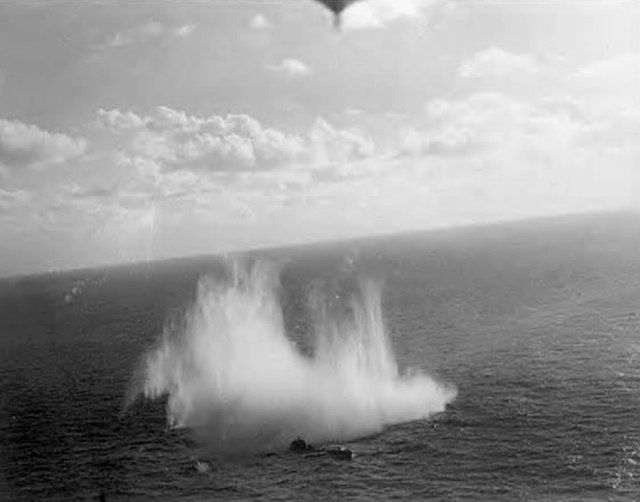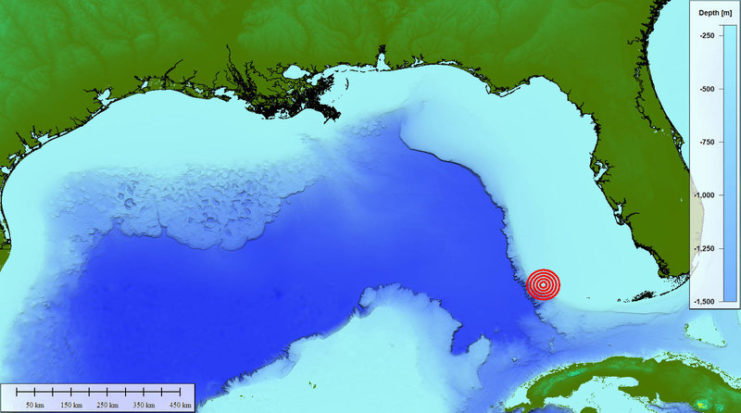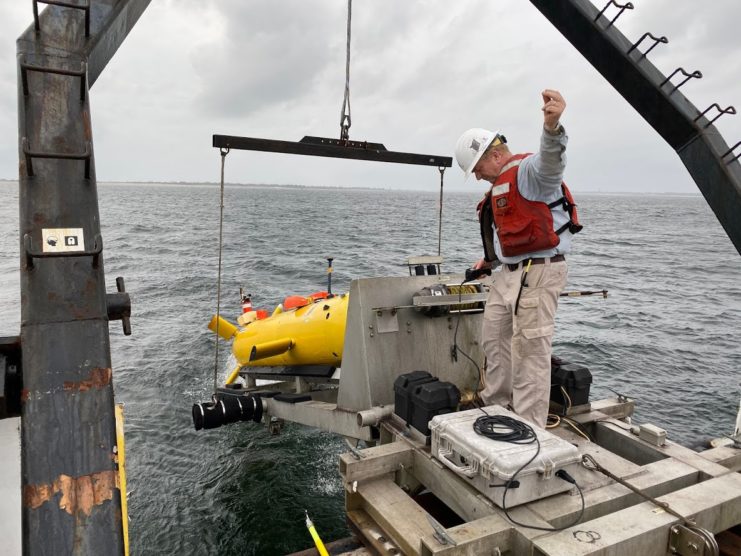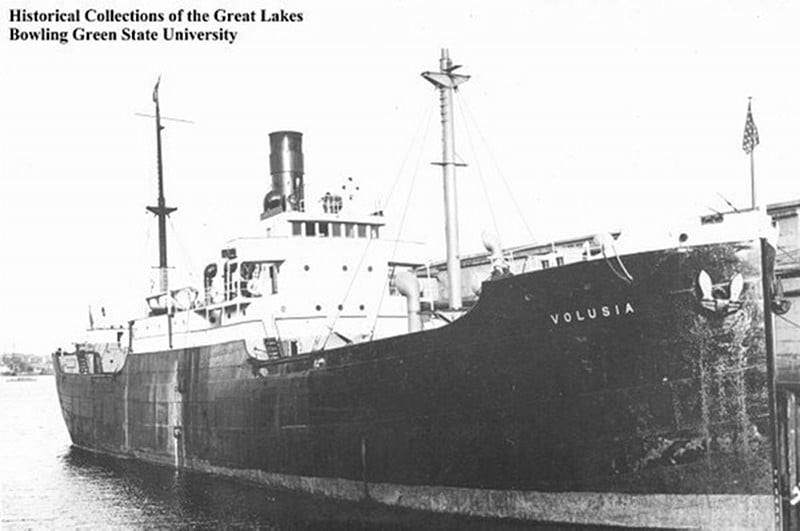A team of international investigators has launched a search for the SS Norlindo, an American steam freighter sunk by a German U-boat in the Gulf of Mexico in 1942. With the backing of NOAA Ocean Exploration, the group of archaeologists and scientists hope to locate the ship and examine its effects on the environment.
Sinking of the SS Norlindo
In late 1941, Germany sent six long-range Type IX U-boat with the Kriegsmarine to scout the east coast of the U.S. Codenamed Paukenschlag, the mission involved U-boat U-507, which was put into active service on March 1, 1942. It would claim World War II‘s first combat casualty in the Gulf of Mexico: the SS Norlindo.
When the U-boat caught sight of the 2,686-ton and 253-foot-long steamship, it launched a torpedo, which struck the starboard side between the #3 and #4 hatches. The mainmast fell and the ship began to sink. After listing to the starboard side, it eventually sank by the stern, taking five crewmen down with it.

There were seven officers and 21 crewmen on board. They were unable to launch the ship’s lifeboats and the majority instead jumped overboard. According to reports, U-507‘s captain, Harro Schacht, picked up the 23 survivors and questioned them before setting them free in life rafts “with cigarettes, tobacco, crackers and drinking water.”
The SS Norlindo, previously known as Lake Glaucus and Volusia, was just the first of three ships to be sunk by U-507. The others – the Munger T. Ball and Joseph M. Cudahay – have since been located off the Florida coast. The U-boat itself was sunk in January 1943 off the coast of Brazil by a U.S. Catalina flying boat.
Preparing to search
The search is being undertaken by scientists and archaeologists from Germany, America and Italy, including two from the University of Southern Mississippi. It will focus on area 36 square nautical miles off the Dry Tortugas, a group of islands 60 miles west of the Florida Keys.
The team hopes to locate the wreck and study its effects on the surrounding underwater environment. They also hope to designate it as a protected site, given its historical significance.
1942-1943, 24 German U-boats entered Gulf of Mexico to disrupt American/Allied-supporting shipping; 56 merchant vessels were sunk & 14 damaged. First casualty was freighter SS Norlindo. A team is now searching for Norlindo's final resting place. https://t.co/Id6UASod5N pic.twitter.com/VzuwSo9w0I
— NOAA Ocean Exploration (@oceanexplorer) August 23, 2021
“As the first Allied casualty of the German U-boat campaign in the Gulf of Mexico during World War II, Norlindo is historically significant and potentially eligible for nomination to the National Register of Historic Places,” Melanie Damour, marine archaeologist and team member, told McClatchy News. “The shipwreck is also a war grave and represents the final resting place of some of her crew.”
To prepare for the expedition, the scientists boarded the USM-owned research vessel Point Sur and performed an extensive search for archaeological and geospatial data using U.S. and international archives. The archived echosounder data identified areas of interest, which have similar dimensions to the SS Norlindo or other shipwreck-like debris on the seafloor.
Out to sea
The three-week expedition launched on August 18, 2021, and researchers have until September 4 to find the wreck and conduct their research. They will use a deep-sea autonomous underwater vehicle equipped with a multi-beam echosounder (MBES) to survey the seafloor. If their target is located, they will deploy a remotely-operated vehicle to investigate and identify the wreck.

The SS Norlindo has been identified by NOAA’s offices of National Marine Sanctuaries and Response and Restoration as one of 87 shipwrecks in U.S. waters that poses a potential pollution threat, due to the amount of fuel onboard at the time of its sinking. To examine its microbiome and its effects on the surrounding seafloor, sediment samples will be taken for further analysis.
More From Us: A Long-Lost Shipwreck is Now Slowly Emerging from the Waves!
“[The shipwreck] represents a potential environmental hazard,” NOAA wrote in a statement. “Because it is unknown if the wreckage is intact, it is unclear if an acute hazard is present in the form of an intact, but corroding, fuel container.”

If the wreckage is located, the team intends on keeping its coordinates a secret. According to Damour, this is due to concerns about relic hunters and other collectors sailing out to the location and desecrating a war grave, “The coordinates will remain confidential so that the site can be protected from an illicit or potentially damaging activities (e.g. Salvage or souvenir hunting).”
